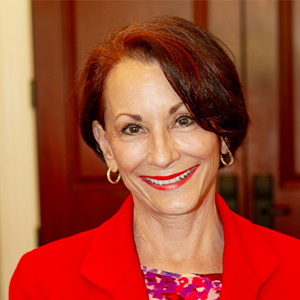The relationship between your nonprofit’s Executive Director and Board members is vital for its success and impact. This article will explore the value of this relationship, highlighting its importance in achieving the nonprofit’s mission and ensuring effective governance. It will delve into key aspects such as communication, collaboration, shared vision, and mutual support, demonstrating how a strong Executive Director-Board relationship can drive positive change and maximize the nonprofit’s potential for long-term sustainability. Additionally, we will consider best practices to provide practical insights and guidance for nonprofit leaders seeking to cultivate this essential partnership.
Leveraging Support and Expertise
A diverse, experienced, and highly motivated Board will provide your nonprofit’s Executive Director (ED) with invaluable support. Let’s consider the following areas of Board impact on the ED:
- Feedback and direction: It is a challenge for every ED and Board to maintain a conscious focus on the mission. It is tempting to follow the money or community needs that don’t align with your nonprofit’s mission. Mission creep, as it is referred to, can send your ED and staff in too many directions that are detrimental to program impact on your clients. It is incumbent on the Board to provide the necessary feedback and guidance to the ED should he/she take on projects which are not mission-centric.
- Expanded network: Everyone has a network unique to them. Networks can be large and cross many domains. Others are small and may only cross a few domains. A stellar Board is comprised of members who can reach a variety of powerful domains. With this extension of networks, the ED is empowered to leverage Board members to share the nonprofit impact and successes, and ask for support across the broader community.
- Sounding board for support and encouragement: An ED must juggle many responsibilities as he/she executes your nonprofit’s mission, and this is where the Board of Directors can be most helpful to the ED. The Board, not involved in the day-to-day operations of the nonprofit, can provide insights into challenges, problems, and issues of which the ED may not be aware. An ED can also become ensnared in community issues that are beyond the bandwidth of the position. The Board and its members can also provide support in this instance.
- Leveraged leadership for major changes: As your nonprofit matures, weighty decisions will be on the horizon. A strategic plan is a Board and ED generated roadmap guiding the organization to its future vision. The strategic initiatives within this plan should include who will help with its successful implementation. Some decisions are readily implemented by the ED, and others will take the skills and determination of the ED and Board to implement together.
- Range of skills and experience: As your nonprofit grows, it is important that your ED can tap into the skills and experience of Board members. The needed skills and experience are dependent on your nonprofit’s mission and programs. In some cases, you may want health care professionals, educators, counselors, or realtors on your Board. Most Boards will benefit from having members include lawyers, bankers, and accountants.
- Ability to fundraise: Your nonprofit will grow as the sources of revenue increase. These sources can be events, individuals, granting agencies, and more. Board members support the ability of the ED to make the ask, lead events, and develop personal relationships with various stakeholders.
Fostering Excellence: Implementing Best Practices for ED-Board Relations
Recognizing the power and impact of Board members your ED can leverage; it is imperative that community members are thoughtfully invited to become Board members. Once the Board is established, the next step is to ensure it embraces and follows Board best practices. These best practices will ensure a strong and productive relationship between your nonprofit’s ED and the Board of Directors:
- Open and transparent communication: Establish a culture of open, honest, and transparent communication between your ED and Board members. The Board should never be caught unaware. The ED must regularly share challenges, successes, problems, progress reports, and financial information to keep everyone informed and aligned.
- Clearly defined roles and responsibilities: Clearly define the roles and responsibilities of your ED and Board members to avoid confusion or overlapping efforts. Outline the specific duties, decision-making authority, and expectations for each position.
- Mutual respect and trust: Foster an environment of mutual respect and trust between your ED and Board members. Encourage active listening, value diverse perspectives, and create a safe space for constructive dialogue and debate.
- Shared vision and strategic alignment: Ensure the ED and Board members share a common vision and strategic direction for the nonprofit organization. Collaborate on setting goals, formulating strategies, and making decisions that align with the organization’s mission and long-term objectives.
- Board member recruitment and orientation: Engage in a thoughtful and strategic process for recruiting Board members who possess the skills, expertise, and passion necessary to further your nonprofit’s goals. Provide comprehensive orientation and ongoing training to empower Board members to contribute effectively.
- Regular Board meetings: Schedule regular Board meetings to provide a platform for discussion, decision-making, and progress updates. Share meeting agendas and materials, in advance, to allow for adequate preparation and engagement.
- Committee assignments and delegation: Utilize committees to divide work, delegate tasks, and engage Board members in specific areas of expertise. Leverage their skills and connections to enhance the nonprofit’s growth and impact.
- Performance evaluation: Implement a structured process for evaluating the performance of the ED and Board members. This helps identify strengths, areas for improvement, and fosters accountability.
- Conflict resolution: Develop a clear process for resolving conflicts or disagreements that may arise between the ED and Board members. Encourage open dialogue, mediation if necessary, and a focus on finding mutually beneficial solutions.
- Ongoing Board development: Invest in continuous Board development by providing opportunities for learning, training, and exposure to industry best practices. Ensuring Board members remain informed, equipped, and motivated to fulfill their governance roles effectively is imperative to the success of the organization.
These recommendations, when implemented, will have a profound impact on your nonprofit. Your ED will benefit from the Boards support and expertise, exponentially maximizing his/her effectiveness. Every nonprofit organization has unique needs and dynamics, and these best practices can be adapted to build a strong, collaborative ED-Board partnership.
The success of your organization is highly dependent on your ED and Board members working in sync. Together they can accomplish a great deal, far more than an ED working independently from the Board. Your Board and ED should have a mutual understanding of the benefits of a strong relationship and actively work to build a culture of collaboration. A collaborative partnership will advance your organization’s mission and create impact and change for those your serve.






